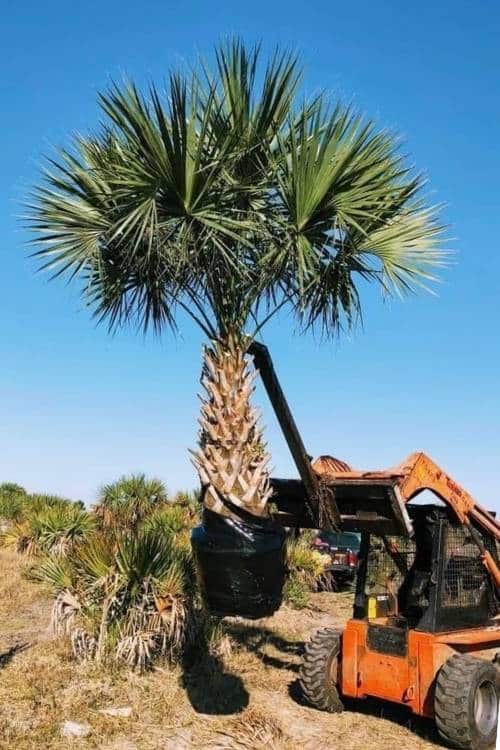How to Get Rid of Scale on Palm Trees
Scales are tiny insects that invade a variety of indoor and outdoor plants, including palm trees. If left unchecked for long, these bugs cause significant damage to palm foliage, and may eventually kill the plant. Some of the most effective ways to get rid of scales on palm trees include pruning off affected foliage, introducing biological controls, and applying a systemic insecticide.
Signs of scale on palm trees
Scales are not the only type of tiny pests that invade palm trees. Fortunately, you can easily identify these insects on palm trees by their shell-like covers, sticky honeydew excrement, yellow and droopy palm fronds, and the presence of black mold on palm fronds.
Dome-Like Protective Cover (Armored Scales)
At first glance, you may mistake scales for brown or white bumps on your palm fronds. However, upon closer inspection, you’ll realize that those shell-like bumps are, in fact, tiny and immobile insects.
Scales are categorized into two major subgroups: armored/hard scales and soft scales. Armored scales form a brown-colored, dome-like cover that they live under. These types of scales stay on the same spot within the palm leaflets.
Note: If you remove the protective cover, you should be able to see the slightly convex-shaped scale insects.
Sticky Excrement (Soft Scales)
Meanwhile, soft scales excrete a sticky film known as honeydew. They may be flat or spherical in shape, and range from white, to black or brown in color. Soft scales can move very short distances, but barely ever do so.
Yellow and Droopy Fronds
You can also tell that your palm trees are infested with scales if you notice certain types of damage to your palm leaflets. For instance, soft scales feed on phloem sap, causing the fronds to become yellow and droopy. The stressed leaflets may also drop prematurely.
Sooty mold on fronds
The honeydew excreted by soft scales on palm fronds also attracts black mold. Sooty mold on green fronds is usually unsightly and dampens the plant’s ornamental appeal. Extremely thick mats of black mold on palm fronds may also hinder photosynthesis, further stressing out your palm plant.
Note: Scales prefer emerging foliage, and will, therefore, be more concentrated on the young palm fronds. Severe scale infestation may also result in stunted growth on young palm trees. And in extreme cases, the palm tree may become too weak and die.
Causes
Scales thrive in dry and warm climates and will likely invade your palm trees from spring-summer. Therefore, despite your best efforts to keep your palm tree healthy, it may still be difficult to prevent scale infestation.
These insects are very invasive and will perch onto various types of fruiting or ornamental garden plants, palms included. Scales feed on the palm plant sap, especially on the palm fronds, resulting in nutrient deficiency.
How to get rid of scale on palm trees
To keep your scale-infested palm tree healthy, you should get rid of the sap-sucking insects as soon as you notice them. You can get rid of scales on palm trees by pruning off the infested fronds, spraying the fronds with horticultural oil, introducing biological controls, and applying systemic insecticides.
Prune the Infested Palm Tree Fronds
If the scale infestation is still at the earlier stages, you can get rid of these bugs by pruning off the affected fronds and branches. However, for taller palm trees, this method isn’t very practicable as it may be difficult to reach some of the fronds.
Introduce Biological Controls
There are various predatory insects that you can introduce to your yard to feed on the scales inhabiting your palm trees. These include some species of lady beetles, parasitic wasps, and lacewings.
- Lady beetles– some species of adult ladybugs will directly feed on soft scales, while their larvae prey on the eggs/nymph tucked away underneath the adult scales.
- Parasitic wasps– females of certain wasp species lay eggs directly on scales so that their larvae can feed on the immobile insects. The maggot-like larvae will only exit the bodies of the dead scales that they’ve been feeding on after they pupate.
Natural scale predators are usually available for sale at most horticultural stores. All you have to do is make a purchase and release them in your yard. Alternatively, you can encourage these predators to naturally inhabit your palm trees by growing various flowering plants that will attract them.
Additionally, flowering plants contain nectar and pollen that natural enemies feed on to thrive and grow in population. More lady beetles and parasitic wasps means more eggs are laid on the scales. This translates into more larvae that feed on and kill the scales.
Spray the Palm Fronds with Horticultural Oil
Horticultural oils, including neem oil and canola oil, are effective scale killers when directly applied onto the infested plant parts. These contact insecticides work by smothering the bodies of the scales, thus suffocating them to death.
Horticultural oils have low toxicity levels, and will, therefore, cause little harm to beneficial scale predators perched on your palm leaflets. Here’s a detailed procedure on how to correctly apply horticultural oil on your palm foliage to get rid of scales:
- Wear protective glasses and long-sleeved coveralls. Though horticultural oils have minimal toxicity, they may still trigger skin and eye irritation.
- Make horticultural oil insecticide by mixing two teaspoons of neem oil or canola oil with a gallon of water. Then, transfer the solution into a spray bottle.
- Spray the solution directly onto the palm tree foliage, ensuring to cover both the upper and underside of the fronds. Continually shake the spray bottle as you move along to keep the oil and water mixed. Also, for taller palm trees, you may need to use a ladder.
- For large scale populations, spray the palm tree repeatedly. Repeat applications are especially necessary if you’re looking to completely kill off armored scales.
Apply a systemic insecticide
Systemic insecticides are usually applied to the palm plant’s trunk by injection or roots by soil drenching; so that the scale-killing chemicals can be translocated to the branches and fronds. This type of insecticide is better than contact insecticides, as it lowers the chances of harm to beneficial insects like ladybugs.
Common, systemic insecticides that are effective on scales include neonicotinoids and organophosphate acephate. Note, though, that some types of neonicotinoids are effective on soft scales but not so much on armored scales.
Scrub the scales off the palm
For indoor palm plants suffering light infestations, you can control the scales by scrubbing the bugs off the plant. An old toothbrush should do the trick. The brush bristle work to break the scale mouthparts, thus dislodging the bugs off the palm leaves and branches.
Note: Alternatively, you can drench a cotton swab in rubbing alcohol and then wipe the scales off the palm leaflets.
Which palm trees are prone to scale?
- Sago palm– large scale populations are likely to gradually kill this palm species.
- Robellini palm– this palm species is highly susceptible to red date scales.
- Kentia Palm– scales are common pests on indoor-grown Kentia palms.
Can scale kill palm trees
Severe scale infestation may cause palm plants to weaken and die. Palm plants will more readily die due to scale infestation if they’re not well tended to. Proper plant maintenance will enhance your palm’s natural defenses against scales.




![Palm Tree Roots – How Deep Do They Grow? [Facts]](https://gardenine.com/wp-content/uploads/2021/03/Palm-tree-root-system-diagram.jpg)
I had a serious infestation of scale on a group of Sago palms, and cleared it up by trimming all of the fronds off, and spraying the trunks down with left over liquid coffee, and spreading coffee grounds on the ground around the trunks . I read that this feeds the palms , and rids the scale also. Scales do not tolerate the caffeine at all. I had my doubts, but my Sagos are green and not a scale in sight.